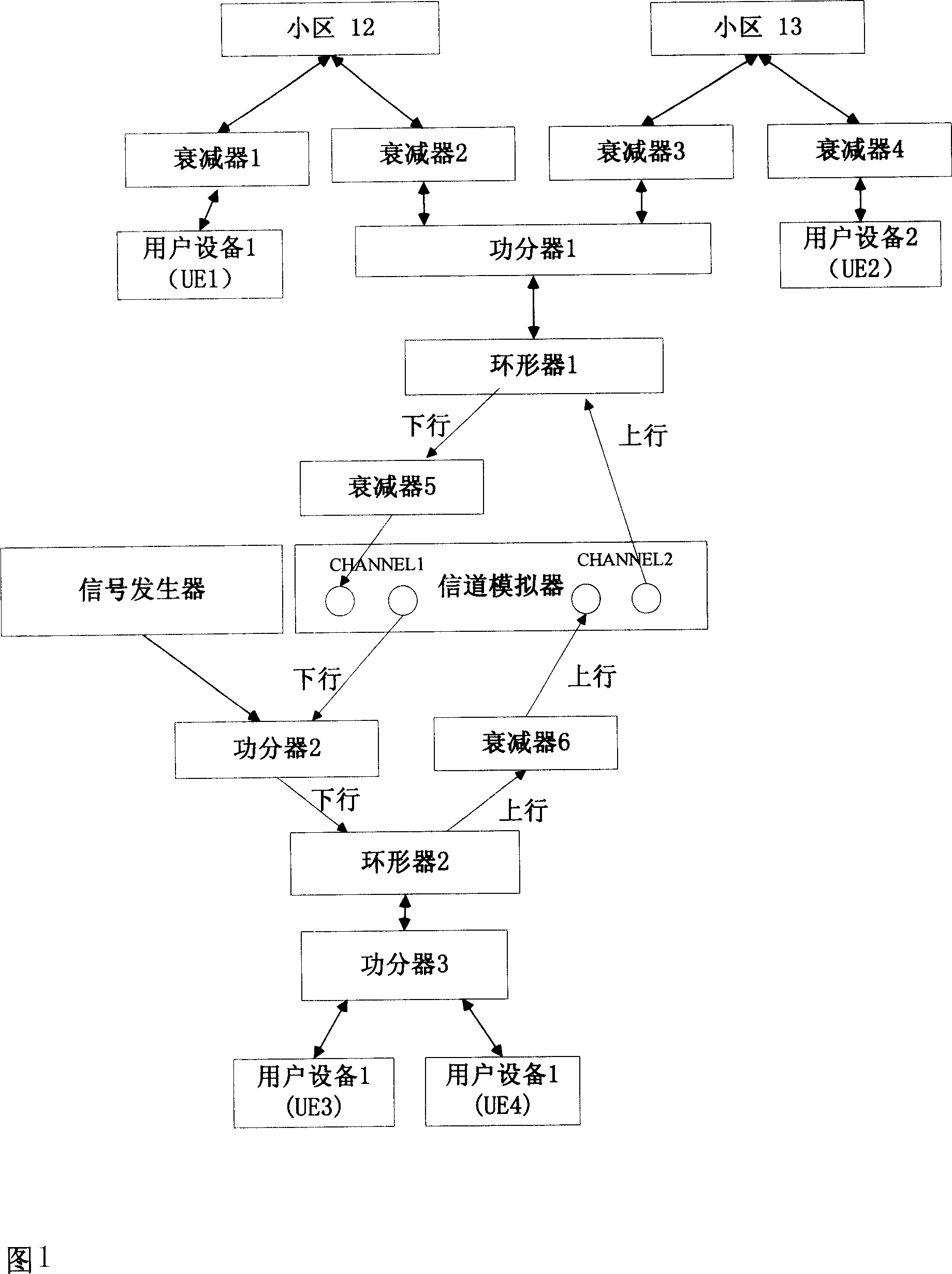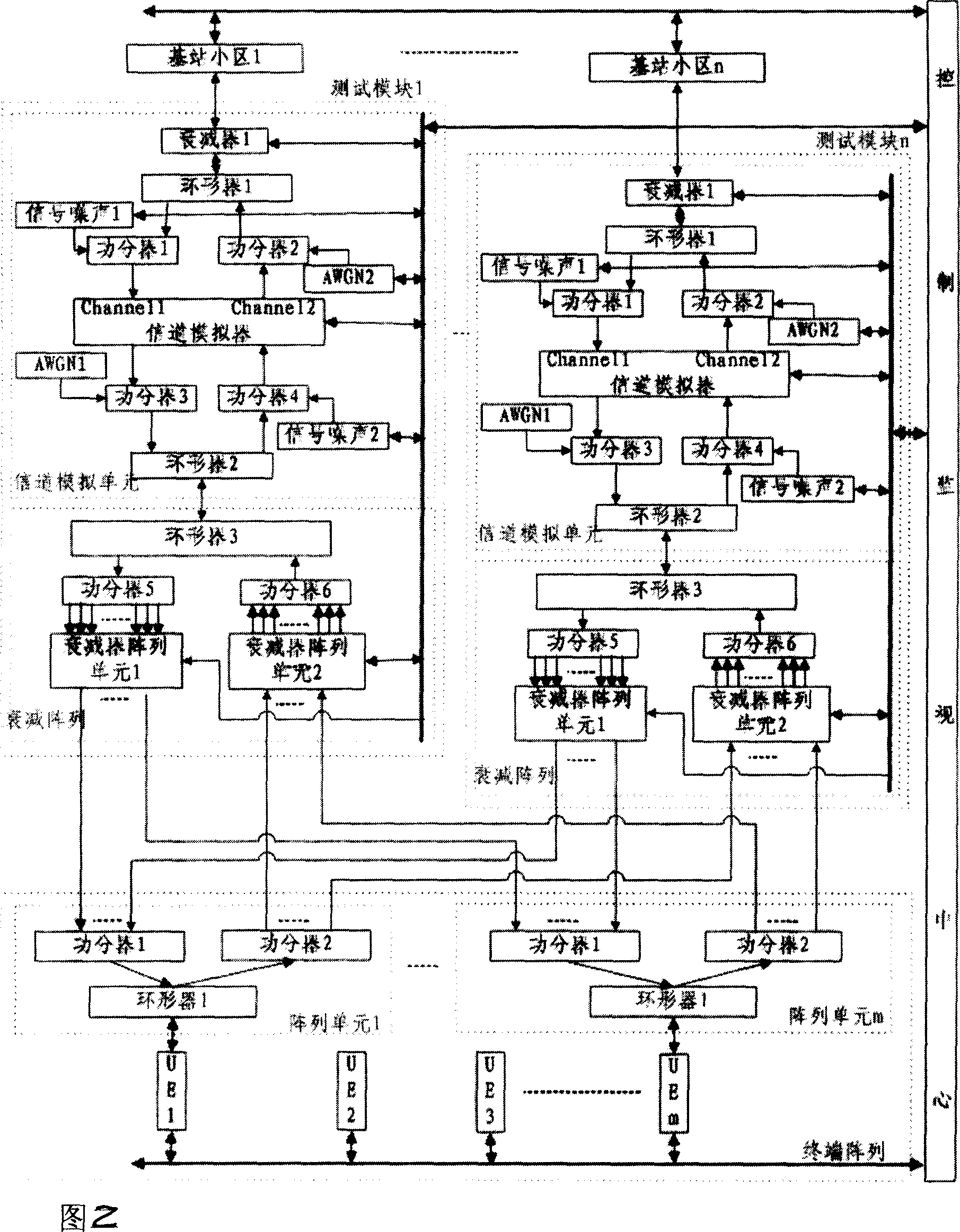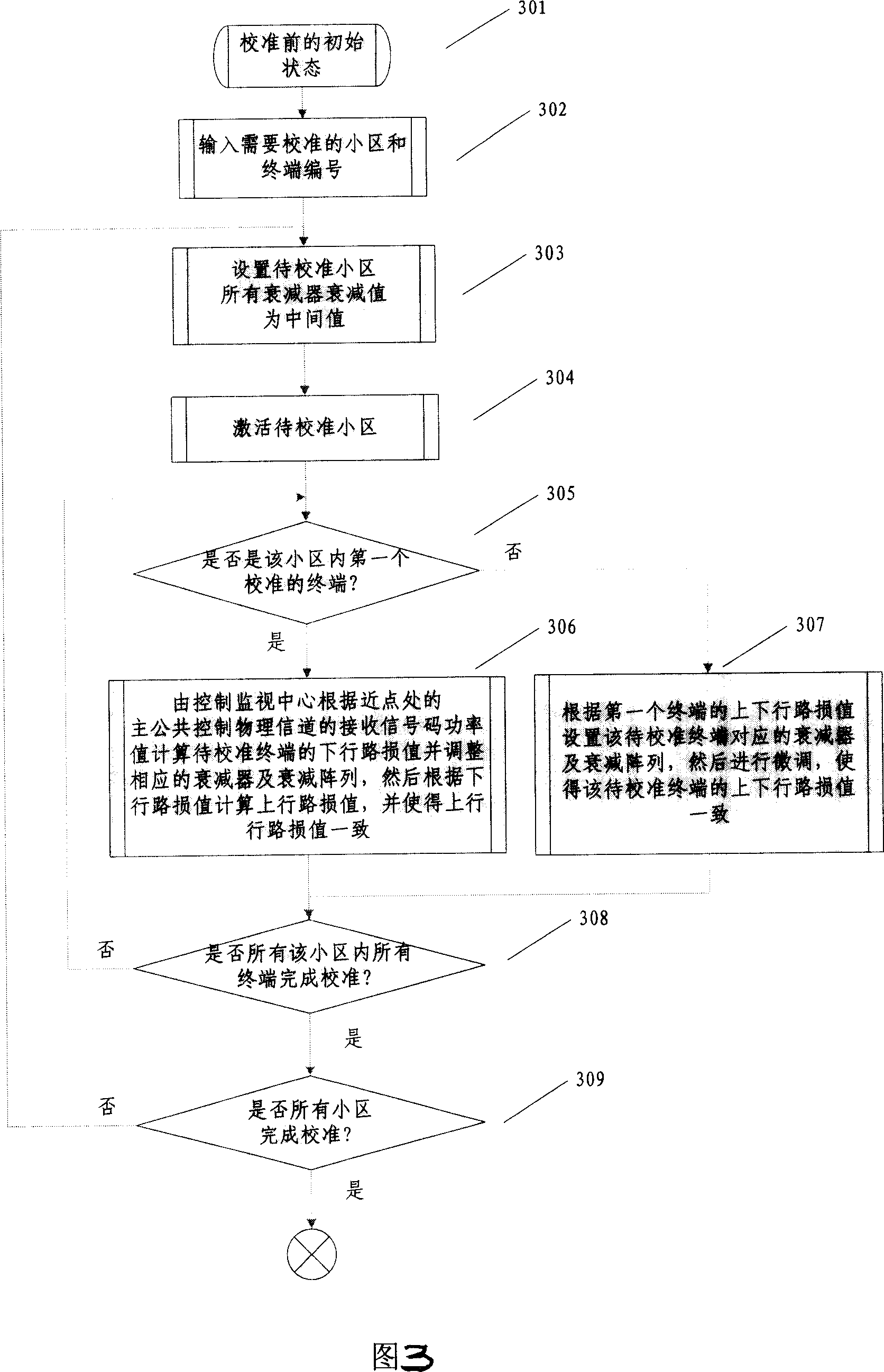An automatic test method and device of the radio resource management performance
A technology for wireless resource management and automated testing, applied in the directions of wireless communication, selection device, radio/inductive link selection arrangement, etc., to achieve automation, reduce manual participation, and facilitate analysis
- Summary
- Abstract
- Description
- Claims
- Application Information
AI Technical Summary
Problems solved by technology
Method used
Image
Examples
Embodiment Construction
[0038] According to the air interface propagation characteristics of the mobile communication system, the device of the present invention connects one or more terminals in the terminal array to one or more cells respectively, and the control and monitoring center has a control port and a monitoring port to connect to the cell base station, terminal array, and attenuator , additive white Gaussian noise (AWGN) noise source, signal noise source, channel simulator, attenuator array, automatic control of various adjustable devices, and automatic testing of link calibration and some RRM algorithms.
[0039] Fig. 2 has provided the system structural diagram that uses automatic testing device described in the present invention to carry out RRM performance test, and the part between a base station subdistrict and terminal array is called a test module, and a test module consists of a channel simulation unit and an attenuation array Composition, each test module has the same internal str...
PUM
 Login to View More
Login to View More Abstract
Description
Claims
Application Information
 Login to View More
Login to View More - R&D
- Intellectual Property
- Life Sciences
- Materials
- Tech Scout
- Unparalleled Data Quality
- Higher Quality Content
- 60% Fewer Hallucinations
Browse by: Latest US Patents, China's latest patents, Technical Efficacy Thesaurus, Application Domain, Technology Topic, Popular Technical Reports.
© 2025 PatSnap. All rights reserved.Legal|Privacy policy|Modern Slavery Act Transparency Statement|Sitemap|About US| Contact US: help@patsnap.com



